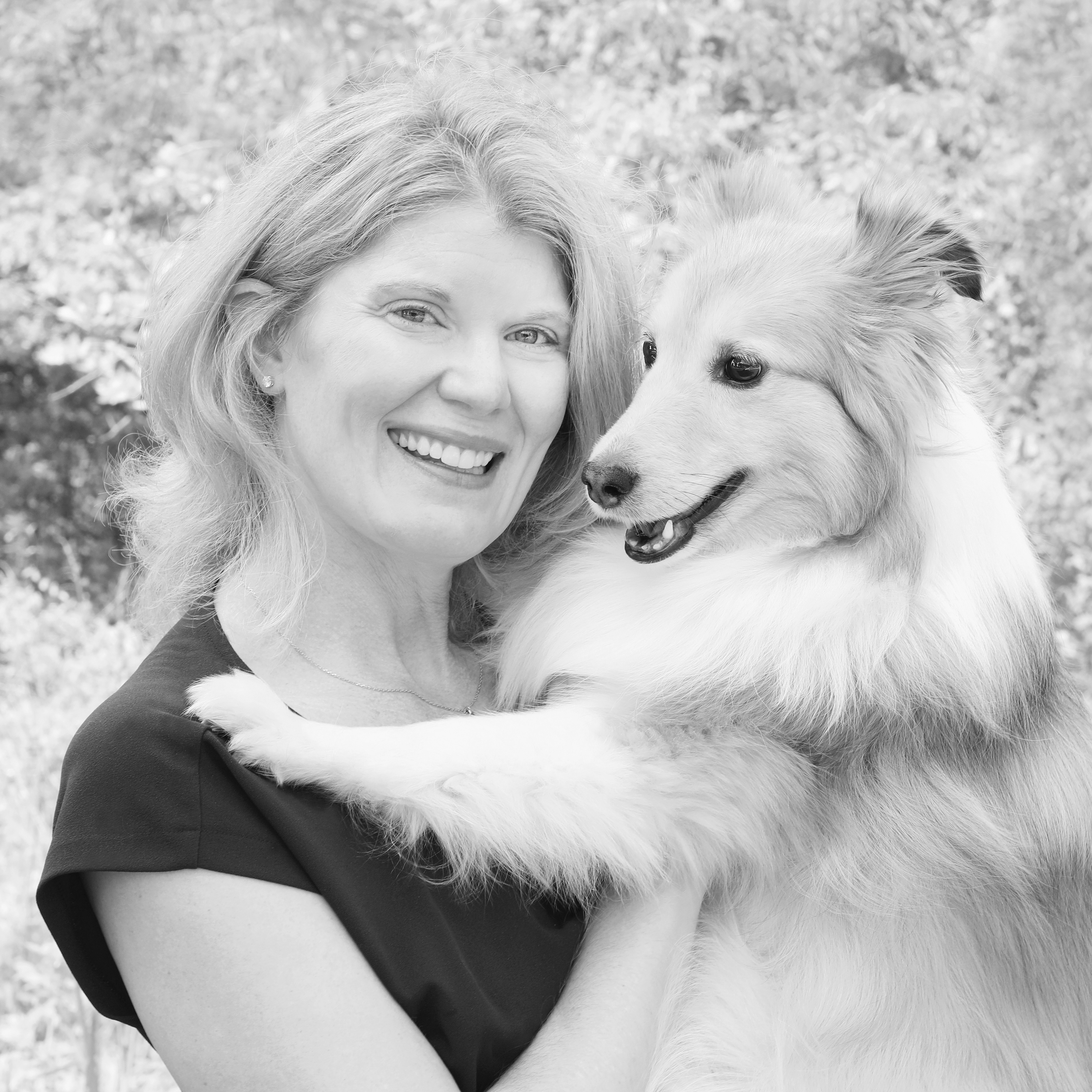Interview with Jennifer Schiazza — Thoughts on Dog Fostering
Interview with Jennifer Schiazza — Thoughts on Dog Fostering
Recently, I had the opportunity and pleasure of interviewing Jennifer Schiazza, a foster dog parent, living in Baltimore, Maryland. Jen and her husband have fostered many dogs and she is an ardent supporter of dog fostering and dog rescue, which saves dogs’ lives. Jen and her husband predominately foster pit bulls in need of furever homes. Additionally, Jen, a woman after my own heart, writes a blog about her adventures in dog fostering, which is narrated by Jax! You can follow Jen’s blog here!
KATHERINE CARVER: How did your adventure in dog fostering begin?
JENNIFER SCHIAZZA: About a year after adopting our dog, Jax, my husband and I thought about adopting a second dog, but we weren’t 100% ready to make the commitment. I heard about fostering through some acquaintances on Facebook and thought it would let us test the waters with Jax and see how he would take to a second dog in the house. It would also help us determine how adopting another dog would impact our lives.
I researched some Baltimore-area rescues and found a few that seemed like a good match. I submitted an application to Dogs XL Rescue and they contacted me to go over their foster program, conducted a home visit and verified with my vet that Jax is kept up-to-date on his vaccines. Before I knew it, they were setting me up with my first foster, a Chesapeake Retriever named Cinnamon, pictured immediately below.
KATHERINE CARVER: How many dogs have you fostered?
JENNIFER SCHIAZZA: We just had the pleasure of seeing our sixth foster dog go to her forever home. (Photographs of our foster dogs are shown throughout this blog post). Some dogs were with us for as short as three weeks, while a few of our fosters were with us for about four months.
KATHERINE CARVER: What dog rescue organizations do you work with in relation to dog fostering?
JENNIFER SCHIAZZA: Our first two fosters were for Dogs XL Rescue. They focus on saving larger dogs because they are usually the first dogs to be put down when shelters run out of space since they cost more to vet and feed than smaller dogs. Dogs XL Rescue pulls dogs from all over the country, allowing them to save a wider variety of dogs than if they pulled from local shelters.
After our second Dogs XL Rescue foster, we transferred our fostering efforts to Jasmine’s House, a non-profit pit bull rescue. Because the number of families willing to take in pit bulls is relatively small compared to the number of families willing to foster other breeds, we switched rescues in honor of Jax, who is a pit bull.
KATHERINE CARVER: Why do you think dog fostering is important?
JENNIFER SCHIAZZA: Millions of dogs are killed in shelters every year because of overpopulation. I know there is no way to save them all, but every foster we take in means a the rescue can save one more life. I love seeing foster families with young children and think their children are so lucky to learn valuable lessons fostering teaches, like compassion and selflessness at such a young age.
KATHERINE CARVER: In your experience, what does dog fostering entail?
JENNIFER SCHIAZZA: Since the rescues provide crates, vet care, monthly heartworm, flea and tick preventatives, food and boarding if you need to go out of town, there is no financial commitment with fostering. There is a minimal time commitment like putting together an extra bowl of food twice a day, an occasional vet visit and optional training sessions that not only help the dogs, but taught me how to handle dogs.
A foster parent must have a willingness to learn. I didn’t know much about training dogs when I adopted Jax. Heck, I didn’t even know how to find a good trainer. I’ve had a lot of support from the rescues and other volunteers. I read articles and ask questions. I’m always learning something new. A sense of humor doesn’t hurt either.
KATHERINE CARVER: What dog fostering experience moved or inspired you the most?
JENNIFER SCHIAZZA: Our most recent foster, Amelia, pictured below, was special to me because I personally chose to pull her from the shelter. All of our previous fosters were recommended to us by the rescues. A photograph of Amelia, pictured on the left below, was posted by Baltimore Animal Rescue and Care Shelter (BARCS) as needing rescue or adoption. She was 20 pounds underweight. My only thought upon seeing her photo was that she couldn’t die in that condition, scared, alone and unloved. I contacted Heather, the foster and adoption director for Jasmine’s House, and asked if we could pull her. Heather made arrangements for me to pick Amelia up from BARCS the next day. I didn’t stop to think if she would get along with Jax, if she was house trained, would sleep through the night or had any health or behavior issues. I was lucky; Amelia knew how to sit, stay, lay down, and give paw. She had no problems introducing herself to Jax and adjusted quickly to our home. We worked on some resource guarding with the help of Jasmine’s House training partner, Meghan Longhurst, and watched her gain confidence and healthy weight over the four months. When she was adopted, I was so happy for her to have her happy ending and she will always hold a special place in my heart.
KATHERINE CARVER: What is the most satisfying and rewarding part of your dog fostering work?
JENNIFER SCHIAZZA: The day each dog is adopted (I call it Gotcha Day), is a great day. Sometimes I shed a few tears and part of me is nervous about how they will fit into their new homes, but I always do a happy dance when they leave for their new home. I’ve kept in touch with a few adopters and hearing how much they love their dog makes it all worth it for me.
KATHERINE CARVER: In your experience, what is the most challenging aspect about dog fostering?
JENNIFER SCHIAZZA: For me, the first 48 hours with a new foster is the most challenging. Imagine introducing a new dog to your home and settling them into your routine an average of every two months. Most of the time we don’t know if they’re house trained, crate trained, or if they will get along with Jax. We had a dog who got car sick, one who didn’t sleep through the night one who had food aggression towards Jax…and every foster had an accident in our house on the first day. We use a good enzymatic cleaner and take it one day at a time.
KATHERINE CARVER: Is it difficult to see the dogs you have fostered move from your home to a forever home? How do you handle this experience when it happens?
JENNIFER SCHIAZZA: It’s definitely been bittersweet letting some of our fosters go, but I’ve always been pleased with the families adopting our fosters. The meet and greets with interested families are important part of the adoption process not just for the adopters, but for the foster families as well because it reassures us that they are going to a loving forever home. As much joy and happiness as some of our fosters have brought us, I’ve seen them bring even more joy to their adopters. I’ve been lucky enough to be able to keep in touch with the adopters of my best fosters. I see photos on Facebook and even get to dog-sit for one of my fosters when the family goes out of town.
I found an anonymous quote that perfectly sums up how I feel when I miss my fosters: “I would rather cry and watch them leave our home to go live a full, good life in a loving forever home of their own, than cry because no one stepped up for them in a shelter where they died all alone, scared, unwanted and unloved.”
KATHERINE CARVER: What advice can you give to someone who might be considering getting involved with dog fostering?
JENNIFER SCHIAZZA: Contact several rescues and ask them about their fostering program to make sure it’s a good fit. Will they find a temporary foster or boarding place if you go out of town? Do they provide food and crates if you need it? Are free training sessions available to attend with your foster dog ? What type of training do they support (i.e. reward-based, force free training)?
Remember your foster dog will be confused and maybe a little scared by his or her new surroundings. They may have been recently spayed or neutered, come from a high stress situation like a shelter or long transport and they don’t know when they’re getting fed, where they are supposed to relieve themselves and they certainly don’t know who you are.
Material things are replaceable. I had a woman tell me her dog chewed a hole in the sleeve of her expensive cashmere sweater, but she rolls up the sleeves and laughs every time she puts it on.
Keep your receipts for anything you spend on your foster and your mileage because it’s tax deductible.
Lastly, cherish the good times and learn from the bad. I take a lot of videos and pictures of my fosters and remember what they did that put a smile on my face. I’ve learned from every one of our fosters, mostly from our mistakes from house training, resource guarding to separation anxiety and it’s made me a better, more patient person.
KATHERINE CARVER: What are your goals and dreams for the future concerning dog fostering?
JENNIFER SCHIAZZA: Fostering can be addictive. We haven’t gone more than a few weeks without a foster in the last year. It’s important to take a break so we’re going to take a breather and then I’m sure it won’t be long before I see another dog in need. We don’t have any children now, but when we do, I definitely want to foster to teach them the importance of rescue.
KATHERINE CARVER: Where can people learn more about dog fostering?
JENNIFER SCHIAZZA: A lot of rescues post on social media sites like Facebook, Pinterest, and Instagram. It’s a good resource to see what dogs are in need, ask questions and find people with a common interest.
Please note all photographs are courtesy of Jennifer Schiazza.
You can read additional interviews here.



















We are the lucky family that got to give Amelia her furever home, and she has brought so much joy back into our lives. We lost our former best friend earlier this year, and Amelia has helped ease that pain so much. Jen has done such an amazing job with her. When I see the pictures from when she pulled her from the shelter, I cry. God bless Jen and all of those like her for helping to save these precious dogs!